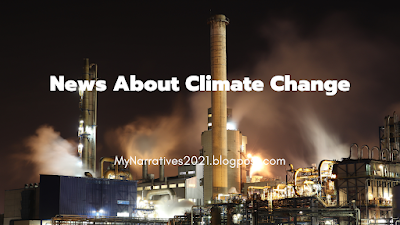What Is Climate Change?
Environmental change is for the most part characterized as a critical variety of normal climate conditions, say, conditions becoming hotter, wetter, or drier, more than quite a few years or more. It's the more extended term pattern that separates environmental change from normal climate fluctuation.
Climate change shows itself in horde ways and is affected by each living being, albeit not similarly. All through the world, the financially hindered and ethnic minorities, the individuals who have contributed the extremely least to the main drivers of environmental change, are probably going to experience the ill effects of its most noticeably awful effects.
How Is Climate Change Measured Over Time?
Environment alludes to the overall climate states of a spot as estimated over numerous years. In the United States, for instance, Maine's environment is cold and blanketed in winter while South Florida's is tropical all year.
Earth-circling satellites, far off meteorological stations, and sea floats are utilized to screen present-day climate and environment, however, it's paleoclimatology information from regular sources like ice centres, tree rings, corals, and sea and lake dregs that have empowered researchers to broaden the world's climatic records back a large number of years.
These records give a far-reaching take a gander at the drawn-out changes in the world's climate, seas, land surfaces, and cryosphere (frozen water frameworks).
Researchers then, at that point, feed this information into complex environment models that can foresee future environment patterns with great accuracy.
It's significant that while environmental change and a dangerous atmospheric deviation are regularly utilized reciprocally, a dangerous atmospheric deviation the new ascent in the worldwide normal temperature close to the world's surface is only one part of environmental change.
What Causes Climate Change?
The mechanics of the world's environment framework are basic. At the point when energy from the sun is reflected off the earth and back into space (generally by mists and ice), or when the world's environment discharges energy, the planet cools. At the point when the earth ingests the sun's energy, or when environmental gases forestall heat delivered by the earth from transmitting into space (the nursery impact), the planet warms. An assortment of variables, both normal and human, can impact the world's environmental framework.
Natural Reasons for Environmental Change
The earth has gone through warming and cooling works previously, sometime before people were near. Powers that can add to environmental change incorporate the sun's force, volcanic emissions, and changes in normally happening ozone-depleting substance fixations.
In any case, records show that the present climatic warming—especially that which has happened since the mid-twentieth century—is occurring at a lot quicker rate than at any other time, and it can't be clarified by normal causes alone.
Anthropogenic Reasons for Environmental Change
People—all the more explicitly, the ozone-depleting substance (GHG) emanations that human action produces—are the main source of the world's quickly changing environment today. Ozone-depleting substances assume a significant part in keeping the planet adequately warm to occupy.
The consumption of petroleum products like coal, oil, and gas for power, hotness, and transportation is the essential wellspring of human-created emanations.
A subsequent significant source is deforestation, which deliveries sequestered carbon into the air. It's assessed that logging, clear cutting, fires, and different types of woods debasement discharge a normal of 8.1 billion metric huge loads of carbon dioxide each year, representing in excess of 20% of all worldwide CO2 emanations.
Other human exercises that create air contamination incorporate manure use (an essential wellspring of nitrous oxide emanations), domesticated animals creation (steers, wild ox, sheep, and goats are significant methane producers), and certain modern cycles that discharge fluorinated gases. Exercises like agribusiness and street development can likewise change the reflectivity of the world's surface, prompting nearby warming or cooling.
However our planet's timberlands and seas ingest ozone harming substances from the environment through photosynthesis and different cycles, these regular carbon sinks can't stay aware of our rising emanations. The subsequent development of ozone-depleting substances is causing alarmingly quick warming around the world.
It's assessed that the world's normal temperature rose by around 1 degree Fahrenheit during the twentieth century.
The Effects of Global Climate Change
As indicated by the World Economic Forum's Global Risks Report 2021, the inability to relieve and adjust to environmental change is "the most significant" hazard confronting networks around the world—in front of even weapons of mass annihilation and water emergencies. Fault its falling impacts: As environmental change changes worldwide biological systems, it influences everything from the spots we live to the water we drink to the air we relax.
What's more, however environmental change influences everybody somehow or another, it's unquestionable that its most pessimistic effects are borne lopsidedly by specific gatherings: ladies, youngsters, minorities, Indigenous people group, and the monetarily underestimated. The environment is a basic liberties issue.
Extreme climate
As the world's environment warms up, it gathers, holds, and drops more water, changing climate examples and making wet regions wetter and dry regions drier. Higher temperatures deteriorate and increment the recurrence of many sorts of catastrophes, including storms, floods, heatwaves, and dry spells. These occasions can have destructive and expensive outcomes, endangering admittance to clean drinking water, energizing crazy rapidly spreading fires, harming property, making risky material spills, contaminating the air, and prompting death toll.
Air Pollution
Air contamination and environmental change are inseparably connected, with one fueling the other. At the point when the world's temperatures rise, not exclusively does our air get dirtier—with exhaust cloud and residue levels rising likewise—yet it additionally becomes loaded up with more allergenic contaminations, like circling mold (because of moist conditions from outrageous climate and more floods) and dust (because of longer, more grounded dust seasons).
Health Risks
As per the World Health Organization, "environmental change is relied upon to cause roughly 250,000 extra deaths each year" somewhere in the range of 2030 and 2050. As worldwide temperatures rises so do the number of fatalities and sicknesses from heat pressure, heatstroke, and cardiovascular and kidney illness.
Rising Oceans
The Arctic is warming up twice as quickly as some other spot in the world. As its ice sheets dissolve into the oceans, our seas are on target to ascend by somewhere in the range of 0.95 to 3.61 feet before this current century's over, compromising beachfront environments and low-lying regions. Island countries face specific danger, as do a portion of the world's biggest urban communities, including New York City, Miami, Mumbai in India, and Sydney in Australia.
Hotter, More Acidic Seas
The world's seas ingest between one-quarter and 33% of our petroleum derivative outflows and are currently 30% more acidic than they were in preindustrial times. This fermentation represents a genuine danger to submerged life, especially animals with calcified shells or skeletons like shellfish, mollusks, and coral. It can devastatingly affect shellfisheries, just as the fish, birds, and vertebrates that rely upon shellfish for food.
In seaside networks where fishing and fish creation support the nearby economy, this effect reaches out to human populaces too, annihilating occupations and making the way for financial ruin. Rising sea temperatures are likewise changing the reach and populace of submerged species and adding to coral blanching occasions that are equipped for killing whole reefs—environments that help in excess of 25% of all marine life.
Risked Ecological Systems
Environmental change is expanding strain on natural life to adjust to evolving territories—and quick. Numerous species are searching out cooler environments and higher elevations, changing occasional practices, and changing conventional movement designs.
These movements can generally change whole biological systems and the complicated trap of life that relies upon them. Subsequently, as indicated by a recent report, 33% of all creature and plant species could confront termination by 2070.
Another review showed that warm-blooded creatures, fish, birds, reptiles, and other vertebrate species are vanishing commonly quicker than they ought to be, a peculiarity that has been connected to environmental change, contamination, and deforestation—every interconnected danger.
In mid-2021, environment and biodiversity specialists gave a joint report showing these interconnections and asking for concurrent activity on the two fronts. On the other side, milder winters and longer summers have empowered a few animal varieties to flourish, including tree-killing bugs that are jeopardizing whole timberlands.
Environmental Change Solutions
We can moderate worldwide environmental change and assist with stemming its adverse effects however; doing as such will require handling its main driver: contamination from consuming petroleum derivatives.








No comments:
Post a Comment